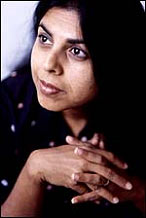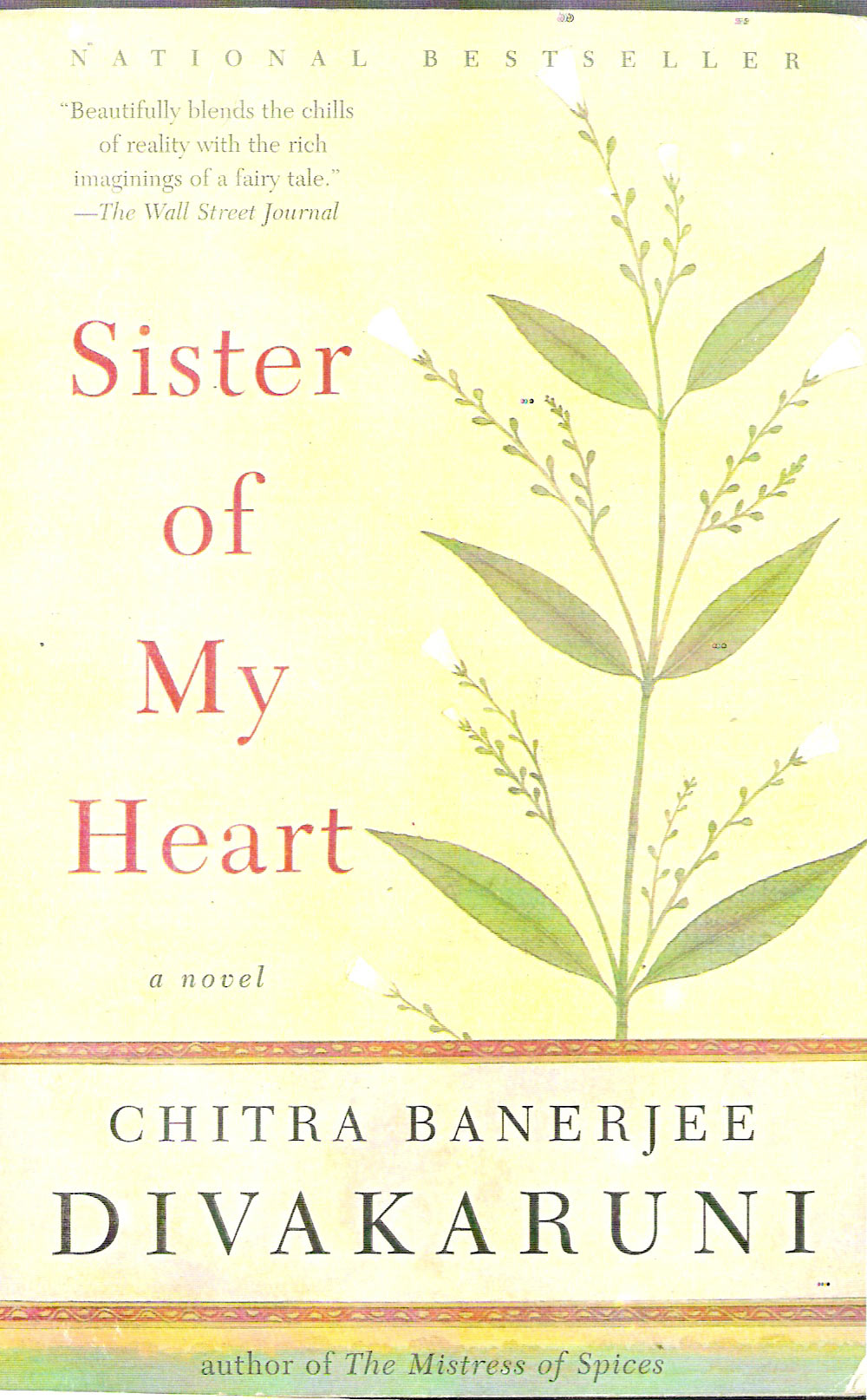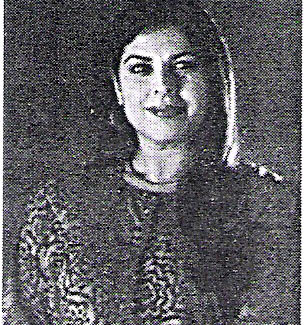AN APPEAL FOR SUPPORT
- We seek your support to meet expenses relating to some new and essential software, formatting of articles and books, maintaining and running the journal through hosting, correrspondences, etc. You can use the PAYPAL link given above. Please click on the PAYPAL logo, and it will take you to the PAYPAL website. Please use the e-mail address mthirumalai@comcast.net to make your contributions using PAYPAL.
Also please use the AMAZON link to buy your books. Even the smallest contribution will go a long way in supporting this journal. Thank you. Thirumalai, Editor.
BOOKS FOR YOU TO READ AND DOWNLOAD FREE!
- A STUDY OF THE SKILLS OF READING
COMPREHENSION IN ENGLISH DEVELOPED BY STUDENTS OF STANDARD IX IN THE SCHOOLS IN TUTICORIN DISTRICT, TAMILNADU ...
A. Joycilin Shermila, Ph.D. - A Socio-Pragmatic Comparative Study of Ostensible Invitations in English and Farsi ...
Mohammad Ali Salmani-Nodoushan, Ph.D. - ADVANCED WRITING - A COURSE TEXTBOOK ...
Parviz Birjandi, Ph.D.
Seyyed Mohammad Alavi, Ph.D.
Mohammad Ali Salmani-Nodoushan, Ph.D. - TEXT FAMILIARITY, READING TASKS, AND ESP TEST PERFORMANCE: A STUDY ON IRANIAN LEP AND NON-LEP UNIVERSITY STUDENTS - A DOCTORAL DISSERTATION ...
Mohammad Ali Salmani-Nodoushan, Ph.D. - A STUDY ON THE LEARNING PROCESS OF ENGLISH
BY HIGHER SECONDARY STUDENTS
WITH SPECIAL REFERENCE TO DHARMAPURI DISTRICT IN TAMILNADU ...
K. Chidambaram, Ph.D. - SPEAKING STRATEGIES TO OVERCOME COMMUNICATION
DIFFICULTIES IN THE TARGET LANGUAGE SITUATION - BANGLADESHIS IN NEW ZEALAND ...
Harunur Rashid Khan - THE PROBLEMS IN LEARNING MODAL AUXILIARY VERBS IN ENGLISH AT HIGH SCHOOL LEVEL ...
Chandra Bose, Ph.D. Candidate - THE ROLE OF VISION IN LANGUAGE LEARNING
- in Children with Moderate to Severe Disabilities ...
Martha Low, Ph.D. - SANSKRIT TO ENGLISH TRANSLATOR ...
S. Aparna, M.Sc. - A LINGUISTIC STUDY OF ENGLISH LANGUAGE CURRICULUM AT THE SECONDARY LEVEL IN BANGLADESH - A COMMUNICATIVE APPROACH TO CURRICULUM DEVELOPMENT by
Kamrul Hasan, Ph.D. - COMMUNICATION VIA EYE AND FACE in Indian Contexts by
M. S. Thirumalai, Ph.D. - COMMUNICATION
VIA GESTURE: A STUDY OF INDIAN CONTEXTS by M. S. Thirumalai, Ph.D. - CIEFL Occasional
Papers in Linguistics,
Vol. 1 - Language, Thought
and Disorder - Some Classic Positions by
M. S. Thirumalai, Ph.D. - English in India:
Loyalty and Attitudes
by Annika Hohenthal - Language In Science
by M. S. Thirumalai, Ph.D. - Vocabulary Education
by B. Mallikarjun, Ph.D. - A CONTRASTIVE ANALYSIS OF HINDI
AND MALAYALAM
by V. Geethakumary, Ph.D. - LANGUAGE OF ADVERTISEMENTS
IN TAMIL
by Sandhya Nayak, Ph.D. - An Introduction to TESOL:
Methods of Teaching English
to Speakers of Other Languages
by M. S. Thirumalai, Ph.D. - Transformation of
Natural Language
into Indexing Language:
Kannada - A Case Study
by B. A. Sharada, Ph.D. - How to Learn
Another Language?
by M.S.Thirumalai, Ph.D. - Verbal Communication
with CP Children
by Shyamala Chengappa, Ph.D.
and M.S.Thirumalai, Ph.D. - Bringing Order
to Linguistic Diversity
- Language Planning in
the British Raj by
Ranjit Singh Rangila,
M. S. Thirumalai,
and B. Mallikarjun
REFERENCE MATERIAL
- UNIVERSAL DECLARATION OF LINGUISTIC RIGHTS
- Lord Macaulay and
His Minute on
Indian Education - In Defense of
Indian Vernaculars
Against
Lord Macaulay's Minute
By A Contemporary of
Lord Macaulay - Languages of India,
Census of India 1991 - The Constitution of India:
Provisions Relating to
Languages - The Official
Languages Act, 1963
(As Amended 1967) - Mother Tongues of India,
According to
1961 Census of India
BACK ISSUES
- FROM MARCH 2001
- FROM JANUARY 2002
- INDEX OF ARTICLES
FROM MARCH, 2001
- DECEMBER 2006 - INDEX OF AUTHORS
AND THEIR ARTICLES
FROM MARCH, 2001
- DECEMBER 2006
- E-mail your articles and book-length reports (preferably in Microsoft Word) to mthirumalai@comcast.net.
- Contributors from South Asia may send their articles to
B. Mallikarjun,
Central Institute of Indian Languages,
Manasagangotri,
Mysore 570006, India or e-mail to mallikarjun@ciil.stpmy.soft.net - Your articles and booklength reports should be written following the MLA, LSA, or IJDL Stylesheet.
- The Editorial Board has the right to accept, reject, or suggest modifications to the articles submitted for publication, and to make suitable stylistic adjustments. High quality, academic integrity, ethics and morals are expected from the authors and discussants.
Copyright © 2006
M. S. Thirumalai
DIASPORIC EXPERIENCE: A GATEWAY TO LIBERATION IN THE NOVELS OF CHITRA BANERJEE DIVAKARUNI
Poornavalli Mathiaparanam, M.A., M.Phil.
Juliet Esther Prasanna, M.A., M.Phil.
INDIAN NOVEL AND EMPOWERMENT OF WOMEN

Novel has been one of the prime genres of literary expression, a torchbearer, in the realm of women's emancipation. Modern Indian Fiction in prose, a gift of the British/European-Indian contact, right from its early days, has focused on the nobility, sacrifice, interior landscape and struggle and multi-personality dynamics of Indian Women. Early Tamil and Bengali novels, for example, abound in themes that relate to the plight of women and their struggle to seek due recognition and rightful place in family and society.
CELEBRATION OF WOMEN IN INDIAN TRADITION
Celebration of women has a long tradition in Indian ethos and literature, which recognize the shakti (power) of women in mythology, rituals, and worship of gods and goddesses. However, empowering them in real life always lagged behind the declared purposes of our mythology, rituals and spirituality. Immortalizing women in stories is an important feature of Indian literature. It is no wonder, then, that in some ways early Indian fiction also followed this basic trend of immortalizing some unforgettable women in fiction.
OUR PURPOSE
In this article, we propose to study a very successful woman writer of Indian Fiction in English to see how as a woman she seeks to depict the life of women in her world and how such depiction fits in in the general context of Indian women.
WOMEN WRITERS OF INDIAN FICTION
Women writers, those in India and those of the Indian Diaspora, are moving forward with strong and sure strides matching the pace of the world. They are recognized for their originality and individuality. These writers are able to sensitively portray a world that has in it women, and with content rich in substance. Their women are real flesh and blood protagonists who are awesome with their relationships to their surroundings, their society, their families, their mental makeup and themselves.
REVOLUTION IN 1960s
In 1960s, the delineation of women characters in novels underwent a remarkable change in Indian fiction. Many men, and specially women, emerged as the champions of the cause of women. And for the women writers, narrative fiction became a canvas to challenge the hegemonic practices of a gender-biased society.
The concept of women merely as wife and child-bearer was abandoned. The novelists began to portray many a woman who overcame odds and liberated herself from male and social oppression at various levels, mental, emotional, physical, social and even political.
MIGRATION, IMMIGRATION AND SOUTH ASIAN WOMEN WRITERS
Migration and immigration have directly or indirectly affected several generations of contemporary writers in English engendering hybridism and culture complexity within them and urging them to grapple with multiple cultures and countries and tensions between them.
South Asian women writers are the newest voices in America's multiethnic literature. One of these prominent writers is Chitra Banerjee Divakaruni whose contemporaries are Bharati Mukherjee, Bhapsi Sidhwa and Jumpa Lahiri, to name a few.
CHITRA BANERJEE DIVAKARUNI
Born in Calcutta, Chitra Banerjee left for the United States in 1976 at the age of 19. She pursued her higher studies, underwent hardships, did a lot of odd jobs and earned her Ph.D. degree from the University of California at Berkeley. Now settled with her husband and children, Chitra is currently teaching Creative Writing at Foothill College in Los Altos Hill, California. She has also been president of MAIRTI, since 1991 - a help line for South Asian women, which particularly helps victims of domestic violence and abusive situations.
In a short span of 15 years, Chitra has received accolade for her novels, volumes of poetry and collection of short stories: Arranged Marriage; The Unknown Errors of Our Lives; Neela: Victory Song; The Conch Bearer; The Mistress of Spices; Sister of My Heart and its sequel, The Vine of Desire.
THE STORY OF THE SEQUEL

The protagonists of the novels, Sister of My Heart and Vine of Desire, Anju and Sudha, though distant cousins, regard one another as sister of their hearts since they were born on the same day. They are brought up by the three mother-figures in their families and extended family: Gouri Ma (Anju's mother, Nalinini), Sudha's mother, and Pishi, the aunt of Anju, who is also a widow.
The fathers of the girls were lost to them through a mysterious and deadly adventure, a quest for a fortune. Sudha suffers from a guilt complex. Since it is believed that her father was responsible for Anju's father's death and decides that she must atone for her sins by giving up things of interest for Anju's sake.
The girls are to be married off at the age of 18. Sudha, who has fallen in love with Ashok, gives up her love for the sake of family honour. Anju, meanwhile, has fallen passionately in love with her future husband Sunil, who, however, has deep love for Sudha. Anju is the bold but not so beautiful cousin, while Sudha is stunningly beautiful.
The cousins get married on the same day; but, on the wedding day, Anju is startled when she realizes that Sunil is attracted towards Sudha, while the latter is marrying Ramesh. But Anju feels sorry for Sudha's sacrifice in giving up Ashok and getting married to Ramesh. Anju leaves for America with Sunil, while Sudha stays behind in India. Though she tries to be a good wife to Ramesh, she suffers at the hands of her cruel mother-in-law. Anju's is shocked at Sunil's attitude, and a rift has been created, and yet the cousins still love each other and continue to keep in touch through letters. The story, thus, has the elements and formula that make Indian stories spicy and spicier!
After three years of parting, the cousins look forward to the joy of expecting their first babies and motherhood. But both experience tragedies in their lives, which make them to reach out to each other. Anju has had a miscarriage and Sudha leaves her husband, Ramesh, who does not support her when his mother wants the baby to be aborted, when it is discovered that she is expecting a girl and not a baby boy.
After her divorce from Ramesh, Ashok reappears in Sudha's life and expresses his desire to marry her, but Sudha turns him down. We should say that this perhaps is the beginning of liberation and empowerment of Sudha. She goes to America on Anju's invitation with her daughter Dayita, to encourage Anju. The novel ends with Sudha arriving in America. It is also known by now that her father was not guilty of Anju becoming father less.
RE-JOINING - THE VINE SPREADS

In The Vine of Desire is a happy reunion of the cousins, which is again marred by Sunil's passionate feelings for Sudha and by Sudha succumbing to his desire. Sudha flees from her cousin's home, works as a nursemaid to an old man to earn a livelihood. Meanwhile Sunil and Anju separate and she feels the heartache and pain. But, after a period of struggle, by involving in creative writing, assignments and extracurricular activities, she sheds her old value system and takes steps towards living a new life. Sudha turns down two suitors, Lalit, a surgeon, and Ashok, who has come to America. Both Anju and Sudha decide to live independently.
IN SEARCH OF IDENTITY

Divakaruni's fiction explores women searching for their identity as human beings, independent of their traditional role as a daughter, wife or mother. Anju and Sudha demonstrate the female independence that Divakaruni celebrates, although such independence is achieved not without trauma and pain. She suggests that women can determine to assert themselves as individuals who can set their own boundaries with their partners only through the importance given to education in their lives. Access to higher education makes them realize the need to live in the family; but rejects the roles prescribed to them by society.
RE-UNION ABROAD
Another important process in the story is the union of the Chatterjee girls in America; this is symbolic of an upward mobility, which is denied to the female protagonists in the traditional narratives. Unlike in the works of many other novelists, the problems, pains and pleasures brought about by immigration are played down in Divakaruni's novels. Unlike other immigrant narratives, Chitra conceives the Indian women's immigration to the US as a journey from oppressed and depressed conditions to freedom and discovery of the self with the inspiration of western influence.
Stories in the past, especially when these stories related to love and women with all their endless suffering and toil, usually ended by directly or indirectly stating that a happy re-union awaited them in heaven. Kalki's famous Tamil novel KaLvanin Kaathali (the Lady Love of the Thief/Robber) is an interesting example. Fortunately for us, in recent times, women could also seek to migrate and be part of the ever-burgeoning Indian Diaspora!
BALANCED VIEWS OF FACTS
At the same time, there is a balanced view of facts in Divakaruni's fiction. She does not decry the good influence of the culture of her native land. The fact that Sudha determines to go back to India and further continues her family contacts back in India shows the hope and trust she has towards her native land. Her homeland also plays a significant role in her redemption and renewal. A catharsis of sorts, which every Diasporic Indian experiences upon touching his or her Old Country, with its myriad complexity and humanity. Sudha is not any more part of her land, and yet she is not away from it.
Another notable point is that Divakaruni has not portrayed men characters as cruel or dominating. They possess good qualities, but lack certain strong points.
Divakaruni is not advocating rebellion and defiance of one culture and acceptance of another. She writes to unite people and she does it by destroying myths and stereotypes. As she breaks down these barriers, Divakaruni dissolves backgrounds, communities, ages, and even different worlds. Divakaruni has recognized the strength of mind and potential of the twenty-first century women who gains independence and autonomy leading to assertion of the self.
NARRATIVE STYLE AND LANGUAGE USE
From the awards the writings of Divakaruni continuously receives in Europe and America it is clear that her writings do communicate to a wide variety of audiences, not necessarily the Indian Diaspora only. Of course, such audiences are sort of trained audiences, seeking deliberately cross-cultural stories.
Unlike the writers of cross-cultural fiction in the past (especially those who wrote within and on Chinese contexts), who preferred to translate the names of characters (as in the writings of Pearl S. Buck), Indian writers have followed the convention of directly adopting Indian names to their characters. Divakaruni continues this practice admirably. If there are only a limited number of characters, and if the events are not many, complex and varied, it becomes easier to follow the story. Divakaruni's sequel has a small number of characters, but the events and processes depicted are based on complex relations.
Conversational pieces of Divakaruni do carry the Indian flavor, while at the same time inner thoughts are couched in standardized English. A good blend, indeed.
PLEASE CLICK HERE TO READ THE ENTIRE ARTICLE IN A PRINTER-FRIENDLY VERSION.
Diasporic Experience: A Gateway to Liberation in the Novels of Chitra Banerjee Divakaruni | The Language of Rhythm Instruments: A Preliminary Study With Reference to "Mridangam" | A Study of Echolalia in Malayalam Speaking Autistic Children | Complexity of Tamil in POS Tagging | Vowel Reduction and Elision in Igbo Data | A Review of IMAGINING MULTILINGUAL SCHOOLS - LANGUAGES IN EDUCATION AND GLOCALIZATION | Equal Access and English Language Learning | HOME PAGE OF JANUARY 2007 ISSUE | HOME PAGE | CONTACT EDITOR
Poornavalli Mathiaparanam, M.A., M.Phil.,
Juliet Esther Prasanna, M.A., M.Phil.
PSGR Krishnammal College for Women
Coimbatore - 610 004, Tamilnadu
India
mathiaparnam@yahoo.co.in
- Send your articles
as an attachment
to your e-mail to
mthirumalai@comcast.net. - Please ensure that your name, academic degrees, institutional affiliation and institutional address, and your e-mail address are all given in the first page of your article. Also include a declaration that your article or work submitted for publication in LANGUAGE IN INDIA is an original work by you and that you have duly acknolwedged the work or works of others you either cited or used in writing your articles, etc. Remember that by maintaining academic integrity we not only do the right thing but also help the growth, development and recognition of Indian scholarship.

